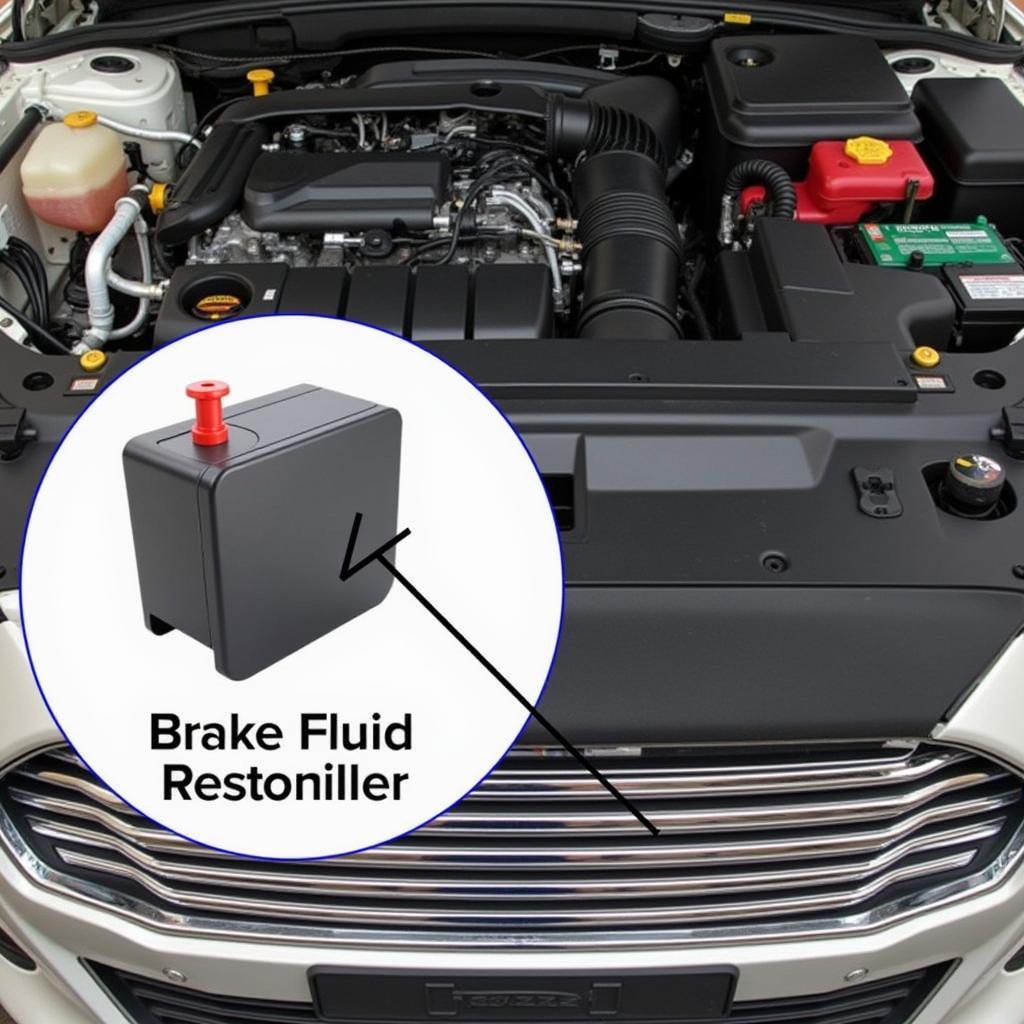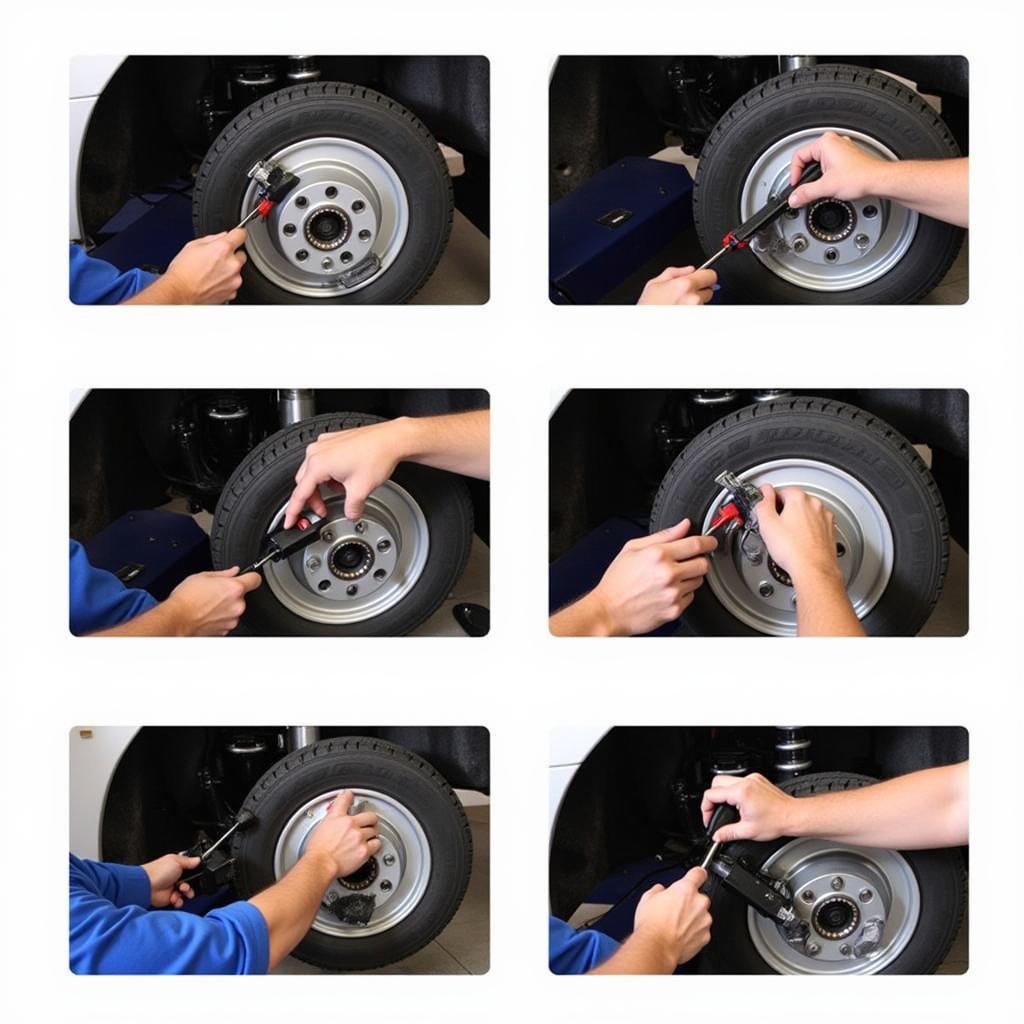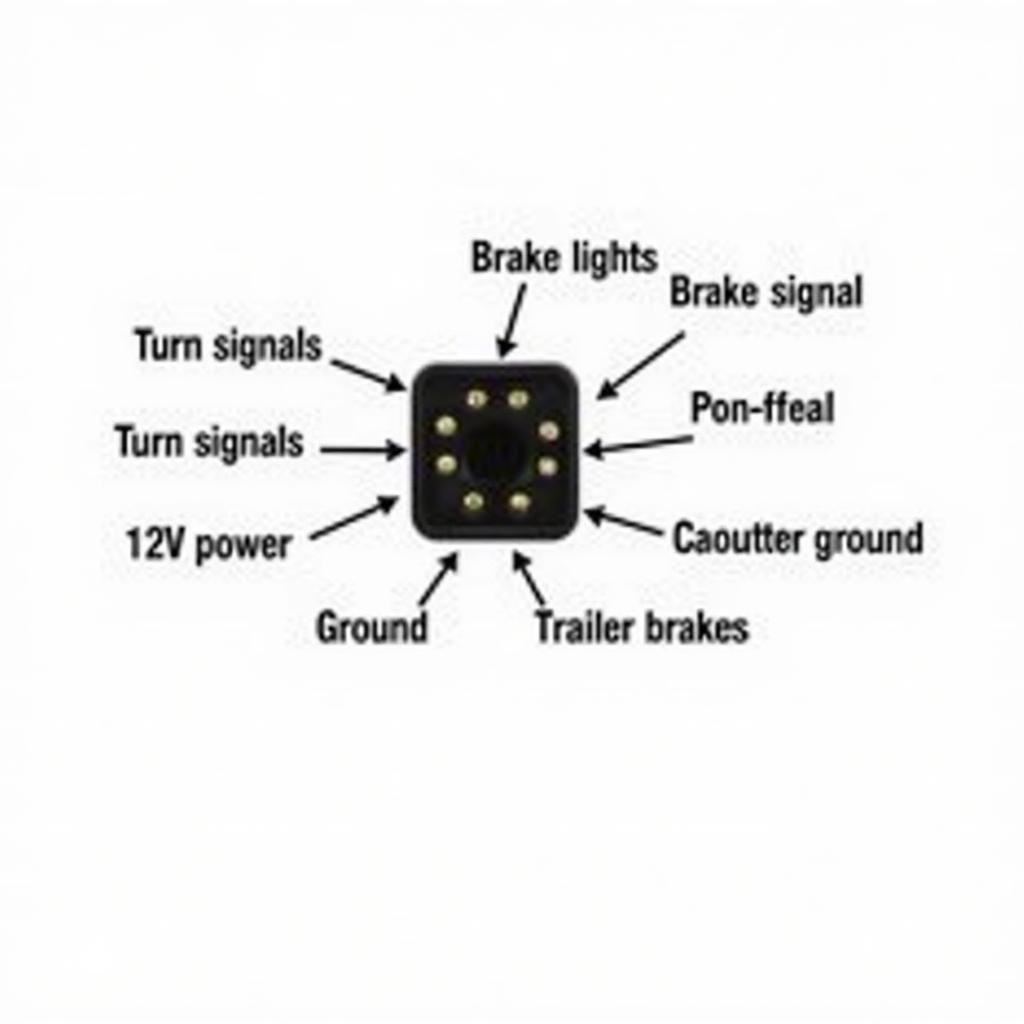The dreaded brake warning light on your 2013 Ford Fusion can be a real headache. Whether it’s a steady glow or an intermittent flicker, this light signals a potential issue with your braking system that needs immediate attention. This article will guide you through the common causes of a 3013 Ford Fusion brake warning light, diagnostic procedures, and possible solutions.
Understanding Your Ford Fusion’s Brake Warning Light
The brake warning light is part of your car’s safety system. It illuminates to alert you to a variety of potential braking problems, from low brake fluid to more serious issues like a malfunctioning ABS system. Ignoring this light could lead to dangerous driving conditions and costly repairs.
Common Causes of a 3013 Ford Fusion Brake Warning Light
Several factors can trigger the brake warning light in your 2013 Ford Fusion. Here are some of the most frequent culprits:
-
Low Brake Fluid: This is the most common cause. Low brake fluid can indicate a leak in the braking system or worn brake pads.
-
Worn Brake Pads: Thin brake pads trigger a sensor that activates the warning light.
-
Faulty Brake Light Switch: A malfunctioning brake light switch can prevent your brake lights from working and activate the warning light.
-
ABS Issues: Problems with the Anti-lock Braking System (ABS), such as a faulty sensor or module, can trigger the warning light.
-
Parking Brake Engaged: If the parking brake is even slightly engaged, the warning light can illuminate.
 2013 Ford Fusion Brake Fluid Reservoir Location
2013 Ford Fusion Brake Fluid Reservoir Location
Diagnosing the Problem
Before you panic, here’s a step-by-step guide to diagnose the issue:
-
Check the Parking Brake: Ensure the parking brake is fully disengaged. Sometimes a slight engagement can trigger the light.
-
Inspect Brake Fluid Level: Locate the brake fluid reservoir under the hood and check the fluid level. If it’s low, top it off with the correct brake fluid type specified in your owner’s manual.
-
Check for Leaks: Inspect the brake lines, calipers, and wheel cylinders for any signs of leaks. Look for fluid stains or wet spots.
-
Test Brake Lights: Have someone observe your brake lights while you press the brake pedal. If they don’t illuminate, the brake light switch might be faulty.
-
Scan for Trouble Codes: Using an OBD-II scanner, check for any diagnostic trouble codes related to the braking system. These codes can pinpoint the specific problem area.
Solutions and Repairs
Depending on the diagnosis, the solution can range from simple DIY fixes to more complex repairs requiring a professional mechanic:
-
Adding Brake Fluid: If the fluid is low, top it off and monitor the level. Continued loss indicates a leak that needs professional attention.
-
Replacing Brake Pads: Worn brake pads require replacement. This can be done DIY, but professional service is recommended for optimal performance and safety.
-
Replacing Brake Light Switch: A faulty switch requires replacement. This is a relatively simple and inexpensive repair.
-
Addressing ABS Issues: ABS problems often require specialized diagnostic equipment and expertise. Consult a qualified mechanic.
“Regular brake maintenance, including fluid checks and pad replacements, can prevent many brake warning light situations,” advises John Smith, ASE Certified Master Technician. “Don’t delay addressing the warning light; it’s a critical safety indicator.”
 Replacing Brake Pads on a 2013 Ford Fusion
Replacing Brake Pads on a 2013 Ford Fusion
Conclusion
The 3013 Ford Fusion brake warning light is a serious signal that shouldn’t be ignored. By understanding its potential causes and following the diagnostic steps outlined in this article, you can effectively address the issue and ensure the safety and reliability of your vehicle. Remember, when in doubt, consult a qualified mechanic. “Addressing brake issues promptly not only ensures your safety but also prevents potentially more expensive repairs down the line,” adds Jane Doe, Automotive Engineer at Ford.
FAQ
- What is the most common cause of the brake warning light? Low brake fluid is often the culprit.
- Can I drive with the brake warning light on? It’s highly discouraged. It indicates a potential safety issue.
- How often should I check my brake fluid? At least once a month.
- How much does it cost to replace brake pads? Costs vary but typically range from $150-$300 per axle.
- What does the ABS light mean? It indicates a problem with the Anti-lock Braking System.
- Is it difficult to replace a brake light switch? It’s a relatively simple DIY repair for many.
- Where can I find the diagnostic trouble codes for my Ford Fusion? Using an OBD-II scanner.

